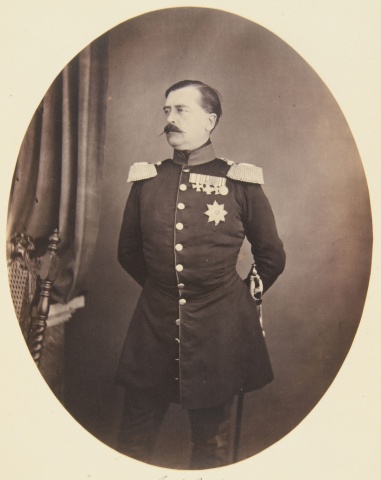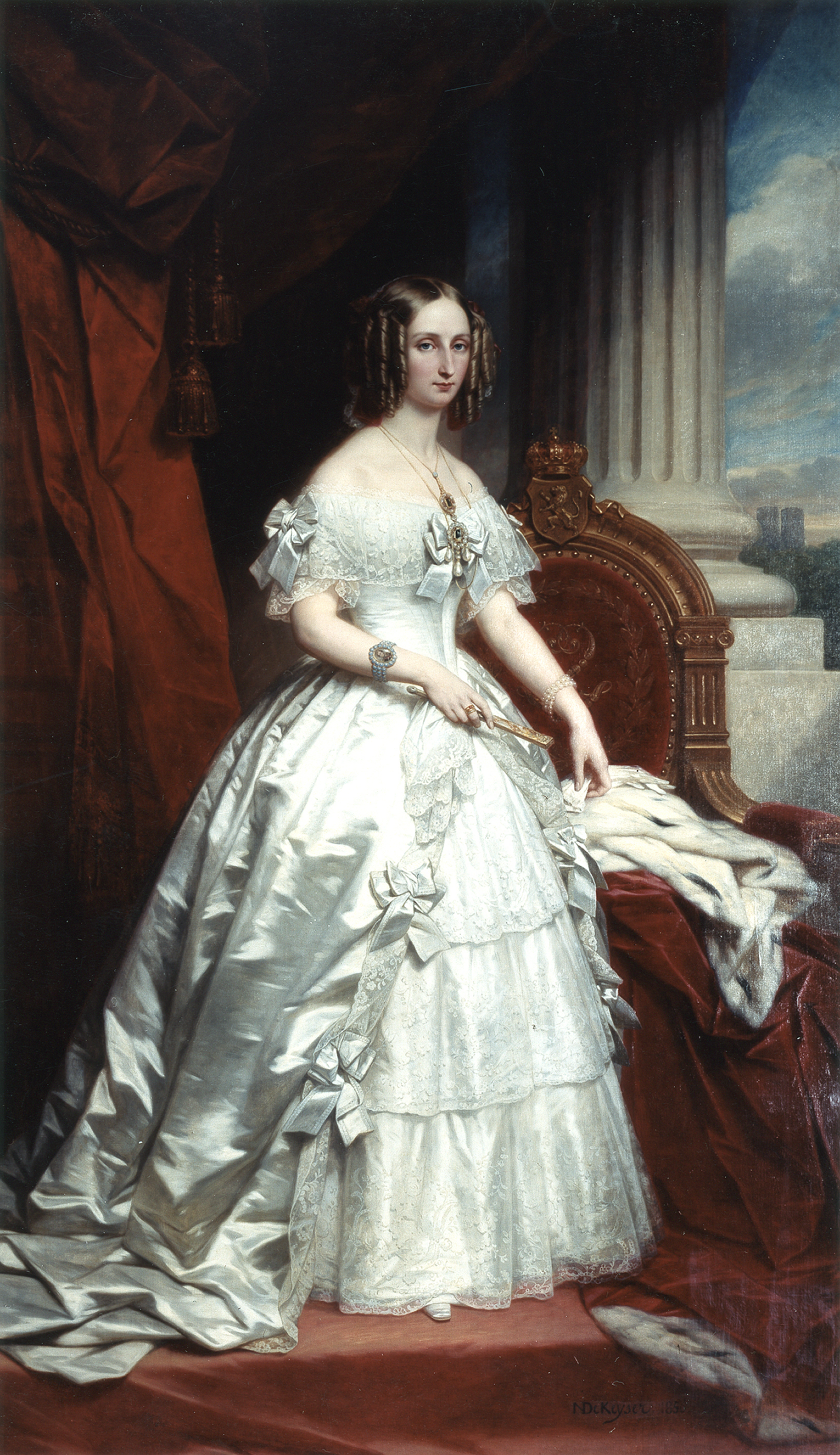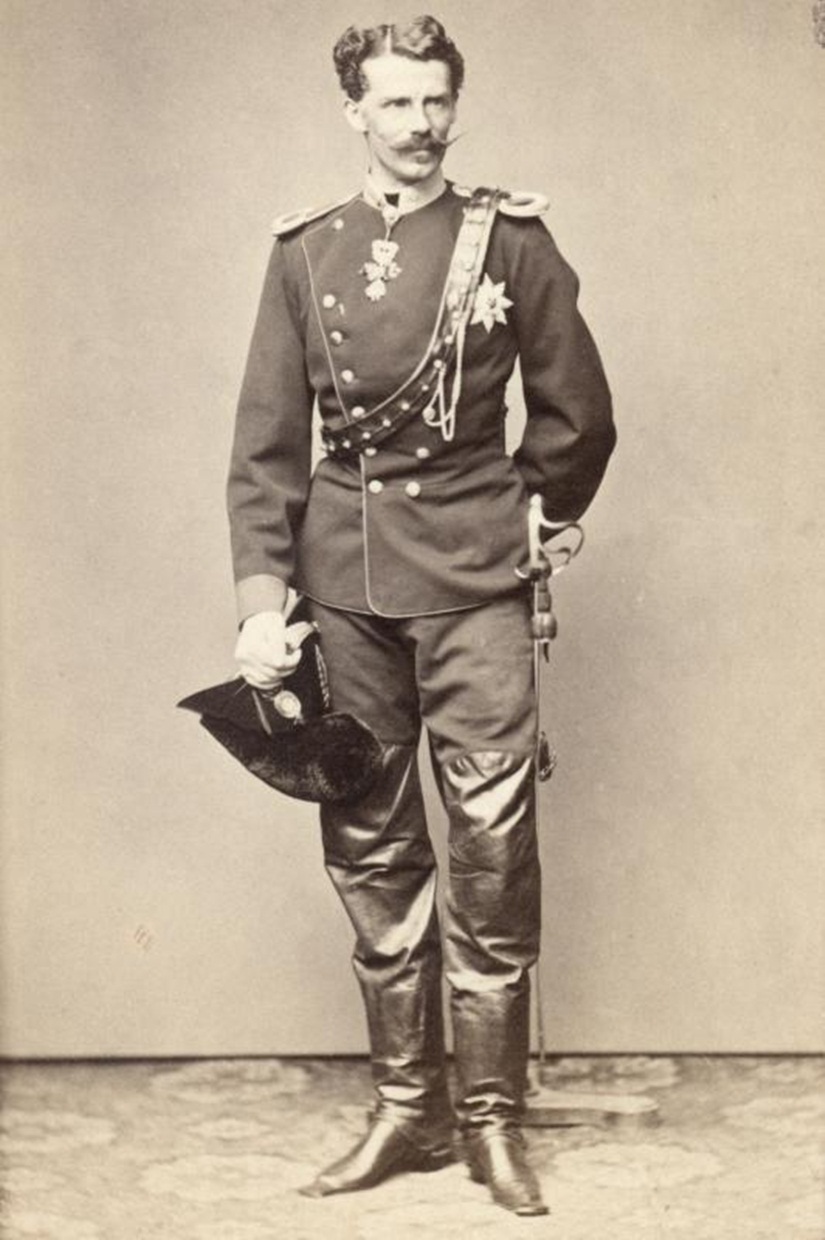|
Prince Charles Philippe, Duke Of Nemours
Charles-Philippe d'Orléans, who bore the courtesy title of Duke of Nemours, was born on April 4, 1905, in Neuilly-sur-Seine and died in the same town on March 10, 1970. He was a member of the House of Orléans, descended from Louis-Philippe's second son, Prince Louis, Duke of Nemours. Family Charles-Philippe d'Orléans was the last child and only son of Emmanuel d'Orléans (1872-1931), Duke of Vendôme, and his wife Princess Henriette of Belgium (1870-1948), Duchess of Saxony. Through his mother, daughter of Prince Philippe of Belgium (1837-1905), Count of Flanders, he is affiliated to the Belgian dynasty of Saxe-Coburg and Gotha: Charles-Philippe is the great-grandson of King Leopold I and the nephew of Albert I of Belgium. On his father's side, the prince belongs to the youngest line of the House of Orléans, descended from the Duke of Nemours, considered by the Orleanists to be the branch of the princes of the blood, heir to the eldest branch in the event of extinction, acc ... [...More Info...] [...Related Items...] OR: [Wikipedia] [Google] [Baidu] |
Duke Of Nemours
Duke of Nemours was a title in the Peerage of France. The name refers to Nemours in the Île-de-France region of north-central France. History In the 12th and 13th centuries, the Lordship of Nemours, in the Gatinais, France, was a possession of the house of Villebéon, a member of which, Gautier, was marshal of France in the middle of the 13th century. The lordship was sold to King Philip III of France in 1274 and 1276 by Jean and Philippe de Nemours. It was then made a county and given in 1364 to Jean III de Grailly, captal de Buch. In 1404, Charles VI of France gave it to Charles III of Navarre and elevated it into a duchy in the peerage of France, in exchange to his ancestral county of Évreux in Normandy. After being confiscated and restored several times, the duchy reverted to the French crown in 1504, after the extinction of the house of Armagnac-Pardiac. In 1507, it was given by Louis XII of France to his nephew, Gaston de Foix, who was killed at the Battle of Ra ... [...More Info...] [...Related Items...] OR: [Wikipedia] [Google] [Baidu] |
Order Of Saint Lazarus (statuted 1910)
The Military and Hospitaller Order of Saint Lazarus of Jerusalem (Latin: ''Ordo Militaris et Hospitalis Sancti Lazari Hierosolymitani'') is a Christian ecumenical fraternal order statuted in 1910 by a council of Catholics in Paris, France, initially under the protection of Patriarch Cyril VIII Jaha of the Melkite Greek Catholic Church.de Jandriac. Les chevaliers Hospitaliers de Saint Lazare de Jerusalem et de Notre Dame de la Merci. Rivista Araldica, November 1913, XI(11):p.679–683 In the 1920s it expanded its jurisdiction enrolling members from other countries in Europe and in the Americas. It re-established the office of grand master in 1935 linking the office to members of the Spanish royal family. It assumed an ecumenical dimension in the 1950s to expand its membership to individuals of other Trinitarian Christian denominations in British Commonwealth countries. Owing to an internal schism in 1969, the order became divided into two competing "obediences", known as the ... [...More Info...] [...Related Items...] OR: [Wikipedia] [Google] [Baidu] |
1970 Deaths
Year 197 ( CXCVII) was a common year starting on Saturday (link will display the full calendar) of the Julian calendar. At the time, it was known as the Year of the Consulship of Magius and Rufinus (or, less frequently, year 950 ''Ab urbe condita''). The denomination 197 for this year has been used since the early medieval period, when the Anno Domini calendar era became the prevalent method in Europe for naming years. Events By place Roman Empire * February 19 – Battle of Lugdunum: Emperor Septimius Severus defeats the self-proclaimed emperor Clodius Albinus at Lugdunum (modern Lyon). Albinus commits suicide; legionaries sack the town. * Septimius Severus returns to Rome and has about 30 of Albinus's supporters in the Senate executed. After his victory he declares himself the adopted son of the late Marcus Aurelius. * Septimius Severus forms new naval units, manning all the triremes in Italy with heavily armed troops for war in the East. His soldiers ... [...More Info...] [...Related Items...] OR: [Wikipedia] [Google] [Baidu] |
1905 Births
Nineteen or 19 may refer to: * 19 (number), the natural number following 18 and preceding 20 * one of the years 19 BC, AD 19, 1919, 2019 Films * ''19'' (film), a 2001 Japanese film * ''Nineteen'' (film), a 1987 science fiction film Music * 19 (band), a Japanese pop music duo Albums * ''19'' (Adele album), 2008 * ''19'', a 2003 album by Alsou * ''19'', a 2006 album by Evan Yo * ''19'', a 2018 album by MHD * ''19'', one half of the double album '' 63/19'' by Kool A.D. * '' Number Nineteen'', a 1971 album by American jazz pianist Mal Waldron * ''XIX'' (EP), a 2019 EP by 1the9 Songs * "19" (song), a 1985 song by British musician Paul Hardcastle. * "Nineteen", a song by Bad4Good from the 1992 album ''Refugee'' * "Nineteen", a song by Karma to Burn from the 2001 album ''Almost Heathen''. * "Nineteen" (song), a 2007 song by American singer Billy Ray Cyrus. * "Nineteen", a song by Tegan and Sara from the 2007 album '' The Con''. * "XIX" (song), a 2014 song by S ... [...More Info...] [...Related Items...] OR: [Wikipedia] [Google] [Baidu] |
Princes Of France (Orléans)
A prince is a male ruler (ranked below a king, grand prince, and grand duke) or a male member of a monarch's or former monarch's family. ''Prince'' is also a title of nobility (often highest), often hereditary, in some European states. The female equivalent is a princess. The English word derives, via the French word ''prince'', from the Latin noun , from (first) and (head), meaning "the first, foremost, the chief, most distinguished, noble ruler, prince". Historical background The Latin word (older Latin *prīsmo-kaps, literally "the one who takes the first lace/position), became the usual title of the informal leader of the Roman senate some centuries before the transition to empire, the ''princeps senatus''. Emperor Augustus established the formal position of monarch on the basis of principate, not dominion. He also tasked his grandsons as summer rulers of the city when most of the government were on holiday in the country or attending religious rituals, and, for ... [...More Info...] [...Related Items...] OR: [Wikipedia] [Google] [Baidu] |
Princess Josephine Of Baden
Princess Josephine Friederike Luise of Baden (21 October 1813 – 19 June 1900) was Princess of Hohenzollern-Sigmaringen from 27 August 1848 to 7 December 1849 during the brief reign of her husband, Prince Karl Anton. Josephine was the second daughter of Charles, Grand Duke of Baden, and Stéphanie de Beauharnais. She was the mother of the first king of Romania, Carol I. Through her younger daughter Marie, she is the ancestress of the Belgian royal family and the grand ducal family of Luxembourg. Life On 21 October 1834 at Karlsruhe, she married Karl Anton Joachim Zephyrinus Friedrich Meinrad, Prince of Hohenzollern-Sigmaringen, son of Charles, Prince of Hohenzollern-Sigmaringen (1785–1853) and his wife Princess Marie Antoinette Murat (1793–1847). They had six children: * Leopold, Prince of Hohenzollern (22 September 1835 – 8 June 1905) he married Infanta Antónia of Portugal on 12 September 1861. They had three sons, including Ferdinand I of Romania. * Princ ... [...More Info...] [...Related Items...] OR: [Wikipedia] [Google] [Baidu] |
Karl Anton, Prince Of Hohenzollern
, spouse = Princess Josephine of Baden , issue = Leopold, Prince of Hohenzollern Stephanie, Queen of PortugalCarol I, King of Romania Prince Anthony Prince Frederick Princess Marie, Countess of Flanders , house = Hohenzollern , father = Karl, Prince of Hohenzollern-Sigmaringen , mother = Marie Antoinette Murat , birth_date = , birth_place = Krauchenwies, Hohenzollern-Sigmaringen , death_date = , death_place = Sigmaringen, German Empire Prince Karl Anton of Hohenzollern-Sigmaringen (german: link=no, Karl Anton Joachim Zephyrinus Friedrich Meinrad Fürst von Hohenzollern-Sigmaringen) (7 September 1811 – 2 June 1885) was the final Prince of Hohenzollern-Sigmaringen before the territory was annexed by Prussia in 1849 and Prime Minister of Prussia from 1858 to 1862, which made him the only Hohenzollern Prince to hold that post. His second son, Karl, became the first king of Romania. Life Karl Anton was the son of Karl, ... [...More Info...] [...Related Items...] OR: [Wikipedia] [Google] [Baidu] |
Louise Of Orléans
Louise-Marie Thérèse Charlotte Isabelle of Orléans (3 April 1812 – 11 October 1850) was the first queen of the Belgians as the second wife of King Leopold I from their marriage on 9 August 1832 until her death in 1850. She was the second child and eldest daughter of the French king Louis Philippe I and his wife, Maria Amalia of the Two Sicilies. Louise rarely participated in public representation, but acted as the political adviser of her spouse. Her large correspondence is a valuable historical source of the period and has been published. Life Born in Palermo, Sicily, on 3 April 1812, she was the eldest daughter of the future Louis-Philippe I, King of the French, and of his wife Maria Amalia of the Two Sicilies. As a child, she had a religious and '' bourgeoisie'' education thanks to the part played by her mother and her aunt, Princess Adélaïde of Orléans, to whom she was very close. She was given a strict religious upbringing by her aunt. She also learned t ... [...More Info...] [...Related Items...] OR: [Wikipedia] [Google] [Baidu] |
Princess Ludovika Of Bavaria
Princess Ludovika of Bavaria (Marie Ludovika Wilhelmine; ''Mary Louise Wilhelmina''; 30 August 1808 – 25 January 1892) was the sixth child of King Maximilian I Joseph of Bavaria and his second wife, Karoline of Baden, and the mother of Empress Elisabeth of Austria. She was born and died in Munich. Life Early years Marie Ludovika Wilhelmine was born to King Maximilian I Joseph of Bavaria and his second wife Caroline of Baden as their fifth child, The birth of Ludovika was known to be difficult. Ludovika was christened one day after her birth as Ludovika Wilhelmine. Ludovika and her sisters received many lessons in literature as well as geography and history. They both spoke German and French. Marriage Ludovika married Maximilian Joseph, Duke in Bavaria, whose father Duke Pius August in Bavaria was her cousin, on 9 September 1828 in Tegernsee. Ludovika was always frustrated that, unlike her elder sisters who married kings and Austrian archdukes, she would not be marrying so ... [...More Info...] [...Related Items...] OR: [Wikipedia] [Google] [Baidu] |
Duke Maximilian Joseph In Bavaria
Duke Maximilian Joseph of Bavaria (4 December 1808 – 15 November 1888), known informally as Max in Bayern, was a member of a junior branch of the royal House of Wittelsbach who were Kings of Bavaria, and a promoter of Bavarian folk-music. He is most famous today as the father of Empress Elisabeth of Austria ("Sisi") and great-grandfather of King Leopold III of Belgium. Life Maximilian Joseph was born at Bamberg, the only son of Duke Pius August in Bavaria (1786–1837) and his wife, Princess Amélie Louise of Arenberg (1789-1823). On 9 September 1828, at Tegernsee, Maximilian Joseph married Princess Ludovika of Bavaria, the sixth daughter of King Maximilian I Joseph of Bavaria, his father's cousin. They had ten children. In 1834 he purchased Possenhofen Castle on Lake Starnberg; this was his major residence for the rest of his life. In 1838 he acquired Unterwittelsbach Castle (today housing a "Sisi" museum) near the site of Burg Wittelsbach, the ancestral seat of the Ho ... [...More Info...] [...Related Items...] OR: [Wikipedia] [Google] [Baidu] |
Princess Victoria Of Saxe-Coburg And Gotha
Princess Victoria of Saxe-Coburg and Gotha (Victoria Franziska Antonia Juliane Luise, Victoire Francoise Antoinette Julianne Louise); 14 February 1822 – 10 November 1857) was the daughter of Ferdinand, Prince of Saxe-Coburg and Gotha-Koháry and Princess Maria Antonia Koháry de Csábrág et Szitnya. Her father was the second son of Francis, Duke of Saxe-Coburg-Saalfeld and Countess Augusta Reuss of Ebersdorf. Biography Born to Ferdinand, Prince of Saxe-Coburg and Gotha-Koháry and Princess Maria Antonia Koháry de Csábrág et Szitnya. Her mother was the daughter and heiress of Ferenc József, Prince Koháry de Csábrág et Szitnya. When Antonia's father died in 1826, she inherited his estates in Slovakia and Hungary. Her elder brother was King Ferdinand II of Portugal and first cousins included British Queen Victoria, her husband Prince Albert of Saxe-Coburg and Gotha as well as Belgian King Leopold II and his sister, Empress Carlota of Mexico. On 27 April 1840, at th ... [...More Info...] [...Related Items...] OR: [Wikipedia] [Google] [Baidu] |
Princess Marie Of Hohenzollern-Sigmaringen
Princess Marie Luise Karoline Alexandra of Hohenzollern-Sigmaringen (17 November 1845 – 26 November 1912), later Countess of Flanders, was a princess of Hohenzollern-Sigmaringen, later simply of Hohenzollern. She married Prince Philippe, Count of Flanders, second son of King Leopold I of Belgium, and she was the mother of King Albert I. Family Marie was the youngest daughter and last of the six children of Prince Karl Anton, Prince of Hohenzollern, Prime minister of Prussia and Princess Josephine of Baden, and as such a younger sister of Prince Leopold, Prince of Hohenzollern, King Carol I of Romania and of Queen Stephanie, Queen Consort of Portugal Marriage Marie was considered as a potential wife for the future Edward VII of the United Kingdom.Hibbert, p. 41. Though she was considered "quite lovely" by his family, her Roman Catholic religion barred her from being a suitable consort for the head of the Anglican church. On 25 April 1867 at St. Hedwig's Cathedral in Berlin, ... [...More Info...] [...Related Items...] OR: [Wikipedia] [Google] [Baidu] |







